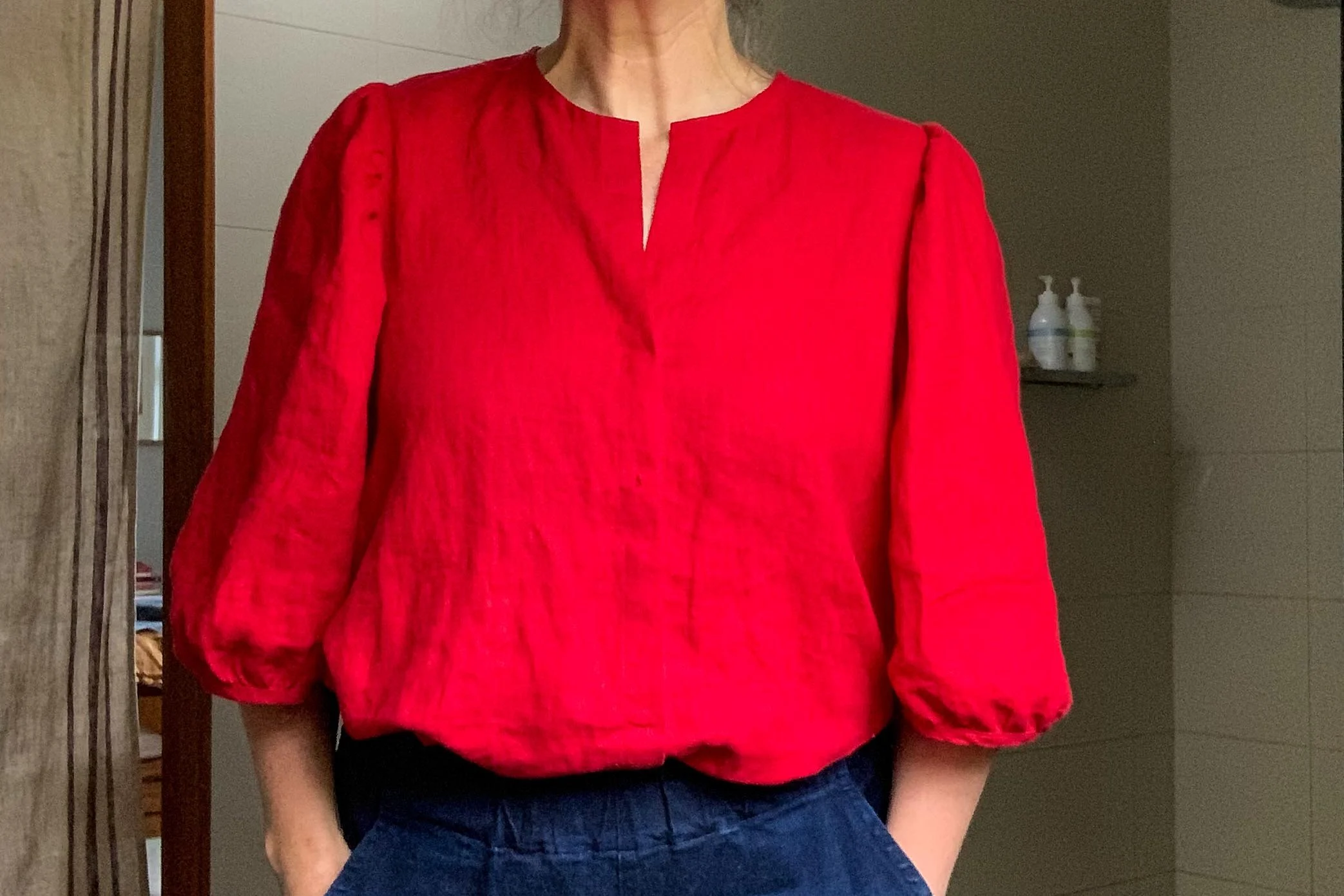So I'm lucky enough to have this friend Anna Farago. Lucky in all the everyday ways that make friendship over many years wonderful. But I often feel even luckier for her friendship for two big reasons.
1. We work very differently as humans, which provides a richness of experience and ideas to our conversations, that I love.
2. She is super patient with me, which is not always an easy feat.
She is an artist and a patchworker. And an art teacher. She is also very very smart. About art, craft and life.
Anyway enough about her. Let's talk about me. And what she has taught me.
As I've said before on this blog, I am wrong often. The whole "I was totally wrong about patchwork" is a fantastic example, and the Anna in question who did the sighing in that post was the lovely Anna Farago. Did I mention that she is patient with me.
Anyhoo. We make things together, not always physically in the same room, but we share what we are making as part of our everyday conversations. A lot. We have different skills. I'm a little more interested in the technical and love the maths, and she knows the art, the colour and the composition. We talk about things as we work on them; what we are doing, why and how. The way we make things is really different too. I'm a practicing-completionist/reforming-perfectionist whereas Anna loves the process.
She didn't/doesn't set out to teach me stuff. But over time, her thoughts on making slowly but surely, seep into the way I work. And today I want to talk about what she has taught me about the beauty of visible process.
I started this quilt a while ago (that is Anna in the top photo of that post) and it is an ongoing-work-in-progress. I'm not even halfway finished the hand-quilting yet, and so I've realised it will be an ongoing-work-in-progress for the next six months at least.
And that is where it has got interesting for me. The perfectionist in me traditionally wants my craft-person-ship to be as beautiful as I can make it. Although I regularly make mistakes, I make decisions about where and what I'm willing to live with and what I rip out. I rip things out a lot. However it turns out that this quilt is a little different.
So the quilt is a linen quilt with alternating stripes. It goes from a darker blue stripe to a light off-white stripe with blue cross hatching. The back is an incredibly pretty silver linen sheeting from Tessuti. Because of the colour contrast on the front I wasn't sure what colour hand-quilting thread to use when I started the hand-quilting.
If I used a dirty darker blue it would show on the back of the quilt but not so much on the front. That the stitching would appear in a really subtle way. Subtle but beautiful. However if I used a silver thread it would really show on the front but not on the back. This would be the opposite of subtle. The stitches would be features; highly visible in all their glory. Which might be totally lovely.... I needed to make a decision between subtle (the blue) and striking (the silver). I decided to go for a more subtle look. So I started with a dirty blue cotton as I thought that would look lovely on the blue square in the middle of the quilt.
The thing is, that when I started the quilt, I hadn't done any hand-quilting for a year. I knew I would be rusty and my stitch size would be all over the place. So I started quilting by doing single stitches as a time (rather than loading the needle with three or four), because I was totally lacking rhythm and skill. Now - because the cotton was blue - and remembering that the fabric was blue on the front of the quilt and silver on the back - the stitching looked lovely from the front and, well... the back just looked atrocious. Small, large, small, on the skew. Wacky. And because it was blue cotton on silver fabric the stitching (mistakes) were incredibly pronounced.
The perfectionist in me still finds these photos a little difficult to look at.
If this was a quilt for the wall that would be totally fine. You wouldn't see it. But it is not. It is a quilt for my own bed, which means you will see both sides, often. If I hadn't been in quite such a hurry to get started, I probably would have done what any self-respecting quilter working on an important project would have done, and made hand-quilting samples to figure out what to do. But I didn't. I jumped in.
I stitched a few rounds in blue, and after being appalled by my lack of technique (perfectionist), I changed the cotton to silver and kept going. My thinking was that stitching on the back - which is always messier unless you are an expert hand-quilter - should be the same colour as the fabric on the back, as that way the messiness wouldn't be so pronounced. I decided to keep going, and after completing a few rounds in silver to make sure I liked it, I decided to pull out the blue stitching and redo it with the silver later.
I mentioned this false start to Anna and she said "hang on a bit - don't pull it out yet - just leave it and see how you feel about it later". And so I did. All the while thinking she was crazy (often my starting postion) but as often happens with me, I've slowly come around to her way of thinking (often my end position).
See Anna loves seeing the maker in the craft. She loves seeing the mistakes in all their glory and isn't obsessed with making things perfect. She likes to be able to see the process. Seeing the history, the choices, and the personality of the maker as part of the object.
This quilt is being made over time as part of the continuum of our lives. What I am discovering in making it, is that I too, am actually enjoying seeing a visible representation of that process. I like that my initial choice of blue stitching is still the the quilt. I like that apparently at random, the stitching then changes to silver. I like that you can see at the centre of the quilt that I'm rusty and then that my stitches even out as I find my rhythm.
I want to say "oh my" but instead I'm embracing the history.
This quilt often gets tossed aside for weeks at a time, so my work lacks consistency. I'm also changing my hand-quilting style all the time, as I try to improve my technique. Sometimes I use the top of my finger, other times I'm pinching the needle. Sometimes I'm quilting towards myself, and sometimes on an angle. Other times I'm quilting in the dark when the bulbs blow out in our loungeroom due to a dodgy fuse. Other times I'm tired, or grumpy, or have had two glasses of wine. Or I have a kid sitting on me. All this history is visible and featured within the stitches of the quilt. Maybe not visible to the uneducated observer but visible to me.
And I love that!
Somewhere along the way, I have given up notions of consistency, perfection and craft-person-ship being my primary goal. Slowly, without feeling it change, I've embraced the nuances of quilting over time, and as part of a life. I've learned to love that the inconsistencies in the quilting, mirror the inconsistencies of living. And that this quilt - which I will hopefully have on my bed for the next fifty years - will be a record of the my skill level, my mood, my decision-making, and my environment during the years in which I made it.
If I hadn't had Anna in my ear, subtly guiding me towards freedom by modelling a different way of making, I would be sitting in sadness as I was quilting; knowing that I wasn't quite crafting a piece that was technically perfect. Instead I sit with my quilt on my lap with a feeling of joy, knowing that I am creating a piece of tangible history, that contains a part of me in every stitch.
Much love to you Anna, for being my friend and leading me to the water.
Felicia x






